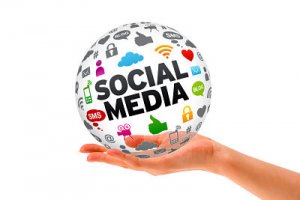Who is the real hero?
November 18, 2020
 We started the storytelling 2.0 conversation in a previous post by identifying that marketers have always been storytellers. But we’ve let ourselves slip away from that grand tradition. And given the consumers we deal with today, it’s actually more relevant and useful than ever before.
We started the storytelling 2.0 conversation in a previous post by identifying that marketers have always been storytellers. But we’ve let ourselves slip away from that grand tradition. And given the consumers we deal with today, it’s actually more relevant and useful than ever before.
Today, let’s turn our attention to a critical element in every story – the hero. In most marketing today, whether you are storytelling or not, the company or its product or service is positioned as the hero. There’s a lot of “we” and “I” in the communications instead of putting the spotlight on the buyer.
Let’s talk about what makes a hero. We see this pattern in almost every book and movie we consume because audiences can connect and relate to this arch, which is why it can be a robust framework for us to use in marketing. It capitalizes on human psychology and how we all share a similar makeup.
See if you recognize this formula:
Every hero goes on a journey. The hero always has a problem and needs some assistance from someone beyond himself. Someone wise who has answers that the hero needs. (Think Yoda.) Together they must fight the enemy, and as they battle together, they learn to trust each other and a bond forms between them. As they vanquish the enemy, the hero is changed somehow and is better/wiser.
I am greatly simplifying Joseph Campbell’s (the creator of the Hero’s Journey) work, but you get the idea.
When you look at the hero framework, it’s easy to see where your company’s product or service fits. We are the Yoda of the story. We are the mentor or guide. But in most marketing materials, the brand is incorrectly positioned as the hero. We mistakenly step into the spotlight that is meant for our customers. We want them to recognize themselves in the story as the hero that we can come alongside and help.
Once we understand who the true hero of our marketing is, we can get to know them better, so we can connect at a different level. I have no doubt you can describe your prospects and clients using demographics. But every 54-year-old business owner who lives in a suburb surrounding a city of 400,000 or more people is not the same person.
We don’t need to know their stats; we need to know their mindset. A person’s mindset is made up of their past experiences, their perceptions and perspective, their motivations, struggles, how they define value, and their current struggle.
When you’ve identified those elements, making them the hero of your story gets much easier.
Here’s how you might knit that together to give you a simple sentence defining your core audience/the hero of your story.
We’re the right fit for <demographic description> who want <fill in the blank>, appreciate and value <fill in the blank> and struggle with <fill in the blank>.
Let me give you an example:
We’re the right fit for adults in their 50s and 60s who have a parent who can no longer live on their own and want to feel confident that they’re providing for their parents’ needs. They appreciate and value family, safety for their parents, transparency, and connection with caregivers as well as the freedom to be with their parent as much or as little as they prefer. But they struggle with knowing how to assess their options and the guilt of not either helping their parent stay home or bringing them into their own home.
It’s easy to see how and where your hero is going to struggle and how and where you can be that sage sidekick who helps them on their quest.
Next time we’ll explore what kind of a sidekick you can be to your story’s hero.
This was originally published in the Des Moines Business Record, as one of Drew’s weekly columns.
More







